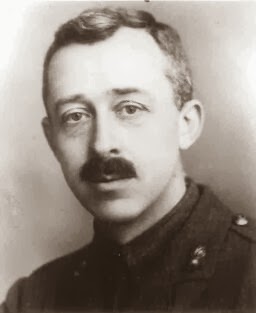Kenneth Edgeworth facts for kids
Quick facts for kids
Kenneth Edgeworth
|
|
|---|---|

Kenneth Essex Edgeworth in January 1905
|
|
| Born | 26 February 1880 |
| Died | 10 October 1972 |
Kenneth Essex Edgeworth (26 February 1880 – 10 October 1972) was an Irish army officer, engineer, and astronomer. He was born in Street, County Westmeath, Ireland. Edgeworth is famous for suggesting in the 1930s that there was a disc of icy objects beyond the planet Neptune.
This idea was later proven true in 1992. This area is now known as the Edgeworth-Kuiper belt, or simply the Kuiper belt. It contains many distant solar system bodies, including Pluto, Eris, and Makemake.
Contents
Early Life and Interests
Kenneth Edgeworth was born on February 26, 1880, at Daramona House in Street, County Westmeath. His parents were Elizabeth Dupré and Thomas Newcomen Edgeworth. They came from Anglo-Irish families.
His uncle, William Wilson, owned Daramona House. He had an observatory and workshop there. William Wilson made important measurements of starlight. Kenneth's family moved to Kilshruley when he was four. This estate also had large telescopes.
Kenneth often visited his uncle's observatory. He met many scientists there. He even observed the 1882 transit of Venus. His uncle later suggested him for the Royal Astronomical Society.
At Kilshruley, Kenneth learned engineering skills. He used his father's workshop to build small engines. He also experimented with fireworks and photography.
Military Career
At age 17, Edgeworth went to the Royal Military Academy, Woolwich in London. He was the best cadet in 1898 and won the Pollock Medal. He also attended the Royal School of Military Engineering at Chatham.
He served in the Royal Engineers in Egypt. He then went to South Africa for the Second Boer War. He was promoted to lieutenant in 1901. After the war, he served in Somaliland and Dublin.
During the First World War, he worked in the Royal Corps of Signals. He helped keep communications working in France. He was mentioned in official reports three times. He also received the Distinguished Service Order (DSO) and the Military Cross. He retired from the army in 1926 as a lieutenant-colonel.
Astronomical Discoveries and Ideas
In 1902, Kenneth's uncle, William E. Wilson, suggested him for the Royal Astronomical Society. Edgeworth was elected the next year. He also studied international economics during the Great Depression. He wrote five books about economics.
Later, he started publishing scientific papers about the Solar System. He also wrote about star formation and red dwarf stars. In 1938, he said that Pluto was too small to be a planet. He thought it was a large piece of the early Solar System.
In 1943, he published "The Evolution of Our Planetary System." In this paper, he talked about a large group of comets beyond Neptune. He was elected to the British Astronomical Association that same year. In 1949, he wrote another paper, "The Origin and Evolution of the Solar System." He suggested there were many small bodies far away from the Sun.
A year later, Jan Oort published his idea of the Oort cloud. In 1951, Gerard Kuiper also presented a paper about objects beyond Neptune. It is not known why Kuiper did not mention Edgeworth's earlier work.
The area of icy objects is often called the Kuiper belt. But some people call it the Edgeworth-Kuiper belt. This is because Edgeworth had the idea first.
Steven J. Dick, an author, wrote:
- From Steven J. Dick, in Discovery and Classification in Astronomy: Controversy and Consensus:
- "...others also envisioned trans-Neptunian objects beyond Pluto. As with most Americans, in this book we use the term "Kuiper Belt," demonstrating that if classes and classification systems are socially constructed... nomenclature is even more so."
Dr. Alan Stern, who led NASA's New Horizons mission to Pluto, said:
- From Dr. Alan Stern, principal investigator of NASA's New Horizons mission to Pluto, reported in the Irish Times:
- "Kenneth Edgeworth probably doesn’t get the credit he deserves. In 1943 and 1949 he had papers that were brilliant. He nailed it."
Later Life and Legacy
In 1917, Edgeworth married Isabel Mary. After leaving the military, he worked as a chief engineer in Sudan for five years. He then returned to Ireland in 1931.
In his retirement, Edgeworth wrote four more books on economics. He also published many letters and papers about astronomy. These led to his book, The Earth, the Planets and the Stars: Their Birth and Evolution (1961).
His idea of a "vast reservoir of cometary material" beyond Neptune was published in 1943. But his astronomical findings were not fully recognized until 1995.
Edgeworth published his autobiography, Jack of all Trades: The Story of My Life, in 1965. He was 85 years old. Kenneth Edgeworth died in Dublin on October 10, 1972, at the age of 92.
Kenneth Edgeworth left an important mark in astronomy. The asteroid 3487 Edgeworth is named in his honor. He was elected to the Royal Irish Academy in 1948. He was also a Fellow of the Royal Astronomical Society since 1903.
His work on the "Origin and the Evolution of the Solar System" showed his deep interest in space. His ideas about the Edgeworth-Kuiper belt continue to influence astronomers today.

